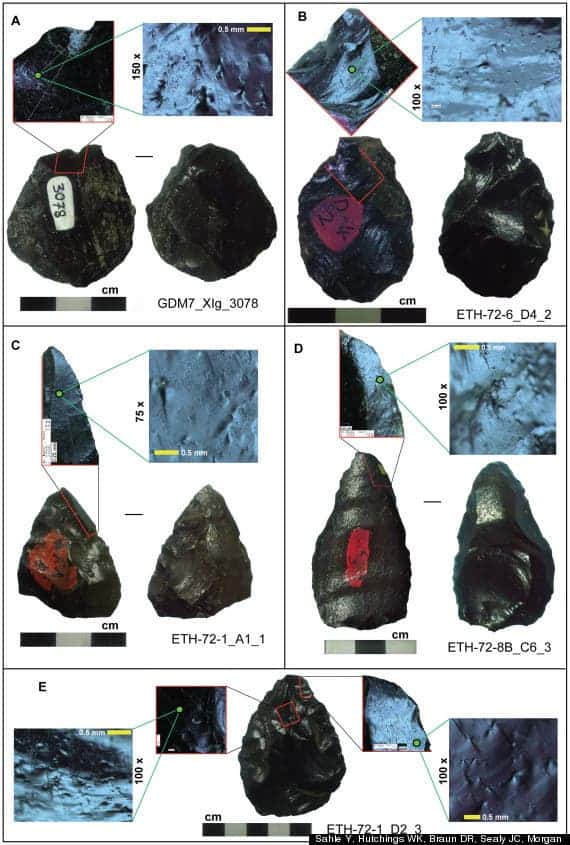- Researchers have found obsidian spearheads dated 85.000 years ago before the development of Homo Sapiens (280.000 years ago).
- This is a very complicated process, requiring numerous steps and lots of concentration and skill
- This has 2 possible explanations: either humans evolved much earlier than previously believed, either another species had advanced craftsmanship skills
Shocking implications
Somebody was throwing spears way before humans, a new study claims. Researchers have found what they believe to be the oldest known stone-tipped throwing spears. The remains are so ancient that they actually predate the earliest known fossils for our species by 85,000 years.
There are two possibilities that could explain this, both of which are simply mind blowing – the first is that our species is much older than previously believed, emerging some 100.000 years before the currently accepted date. The second is perhaps even more shocking – another species was extremely crafty and clever, making sophisticated tools long before Homo sapiens emerged.
Should this be the case, the most likely candidate seems to be Homo heidelbergensis, aka Heidelberg Man – who inhabited Africa, Europe and western Asia from at least 600,000 years ago. It’s clearly that he got around well and was very adaptable, and even though it’s a very blurry line, many believe that this is in fact the ancestor of Homo Sapiens, as well as the Neanderthals.
A prehistoric innovator?
The estimated date for the spearheads is 280.000 years, and they were found in an Ethiopian Stone Age site known as Gademotta. Dr. Yonatan Sahle, a postdoctoral researcher at the University of California at Berkeley’s Human Evolution Research Center explains that they are made from obsidian (black volcanic glass); craftsmen of the time had to first develop them into the desired shape, then design the spear shafts, and then make sure that the tips are firmly attached to the shafts. For that time, this task is extremely complex, requiring multiple steps and firm concentration and know-how.
So could these developments in fact be the result of a genius of the time, and not a widespread development? According to Sahle, that’s quite possible.
“Technological advances were not necessarily associated with anatomical changes (among Homo species),” he said. “The advances might have started earlier.”
The area itself is very helpful for this type of development.
“High-quality raw materials were nearby, so those could have allowed for the full expression of technological skills,” he said. “Second, a bigger population was supported at the site,” he continued. With more individuals around, there would have been a greater chance for the spread of innovative ideas. If there was indeed a Steve Jobs-type in the mix, he would have been able to influence more individuals and perhaps even created a prehistoric spear-making assembly line of sorts. “Thirdly, there was a mega lake at the site,” Sahle said. “It might have attracted stable occupations there, further fueling technological advances.”
It’s still unclear what type of animals were hunted with these spears, but one thing is almost certain – somebody developed spearheads in Ethiopia 85.000 years ago before this hunting method went mainstream.
Scientific Reference: Earliest Stone-Tipped Projectiles from the Ethiopian Rift Date to >279,000 Years Ago. Yonatan Sahle, W. Karl Hutchings, David R. Braun, Judith C. Sealy, Leah E. Morgan, Agazi Negash, Balemwal Atnafu. Published: Nov 13, 2013DOI: 10.1371/journal.pone.0078092










